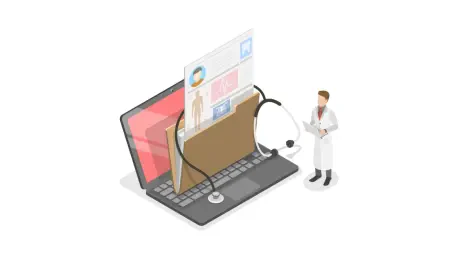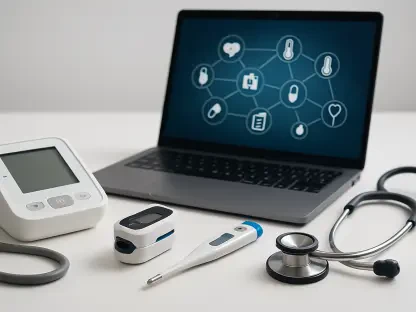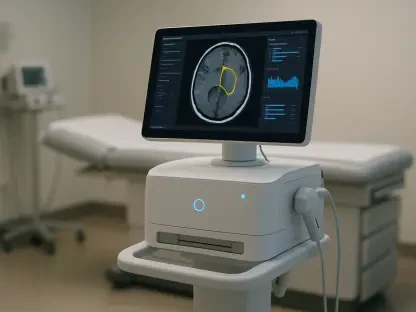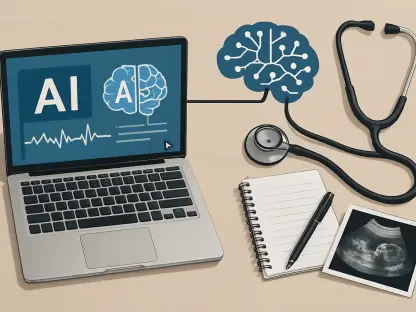As healthcare systems increasingly rely on Electronic Health Records (EHRs) to enhance efficiency, the focus has shifted toward integrating effective patient communication within these digital frameworks. While EHRs have streamlined the management of clinical data and facilitated centralized information access, their design often overlooks patient engagement, leaving a critical gap. In a patient-centric healthcare paradigm, this lack of effective communication tools within EHRs has surfaced as a significant concern, demanding a re-evaluation of existing systems to improve patient outcomes and satisfaction.
The Current State of EHRs and Patient Communication
EHRs have become the cornerstone of modern healthcare, serving as essential tools for digitizing patient information, simplifying administrative tasks, and ensuring seamless coordination among healthcare providers. Despite their widespread adoption, EHRs face notable limitations, particularly in fostering active patient participation. Effective patient communication encompasses not just the transmission of information but also ensuring understanding and active participation in care plans. The current structure of most EHR systems falls short in facilitating these objectives, leading to passive patient roles and potential lapses in health management.
Persistent challenges within EHR systems manifest in the form of inconsistent communication capabilities, which significantly affect patient engagement. Patients often find themselves disconnected from their care journey, as timely and relevant information is either inaccessible or non-existent. This communication gap undercuts the potential for EHRs to deliver comprehensive, patient-centered care, highlighting a need for improvements that address these shortcomings without disrupting existing system architecture.
Trends Influencing EHR and Patient Communication
Emerging Innovations and Technologies
Recent advancements in technology, such as artificial intelligence (AI) and automation, offer promising avenues for enhancing patient communication. AI-powered solutions can predict patient needs and automate routine interactions, freeing up healthcare professionals to focus on complex care aspects. Moreover, there is a growing adoption of multi-channel communication platforms that expand interaction options beyond traditional emails and phone calls. These platforms help reach patients through preferred channels, thereby improving engagement and accessibility.
Market Dynamics and Consumer Behavior
The healthcare market is witnessing a transformative shift toward patient-centric and value-based care models. This transition is underscored by increased transparency demands and a push for greater patient empowerment. Patients today expect to engage actively in their healthcare decisions, a trend fueled by their experiences in other consumer-focused industries. The need to align EHR functionalities with these evolving expectations is evident, as effective communication becomes a vital component in meeting consumer demands and ensuring comprehensive care delivery.
Addressing Challenges in EHR Systems
Healthcare providers face numerous technological and operational barriers in optimizing patient communication within EHR frameworks. The integration of communication solutions into existing EHR infrastructure is essential for bridging these gaps. Implementing comprehensive systems that support automated, personalized communication can significantly enhance patient engagement without necessitating a complete system revamp. Additionally, healthcare professionals play a crucial role in driving these changes, as their involvement and expertise are critical for adapting solutions to fit clinical workflows and patient needs effectively.
Strategies to overcome EHR limitations include developing systems that facilitate real-time, interactive communication channels. Such advancements allow patients to engage with healthcare teams dynamically, enabling more meaningful interactions and improving overall satisfaction. By addressing these challenges head-on, healthcare systems can shift towards more inclusive, patient-oriented practices, ultimately leading to improved health outcomes.
Regulatory Environment Impacting EHR and Communication
The regulatory landscape plays a pivotal role in shaping EHR practices and patient communication strategies. Healthcare regulations demand stringent compliance to ensure the security and privacy of patient data, influencing how communication tools are integrated within EHR systems. Adherence to these regulations is critical, as breaches can have severe consequences both legally and reputationally. Evolving standards continually impact EHR operations, requiring systems to adapt to maintain compliance and optimize patient interactions simultaneously.
As regulations continue to define the contours of healthcare technology use, providers must remain agile in response to new requirements. Implementing secure communication solutions that adhere to regulatory standards can drive more informed and effective patient communication, allowing systems to function within compliance frameworks while delivering high-value care.
Future Prospects for EHR and Patient Communication
The future of healthcare technology lies in successfully blending EHR systems with innovative communication solutions. Emerging technologies present opportunities for proactive patient interaction models that cater more closely to individual needs. As the industry evolves, providers can expect increased adoption of tools that leverage real-world data and patient insights to tailor care delivery effectively. Economic factors and global health trends will also significantly influence these developments, shaping the direction of industry growth and patient-centered strategies.
Forecasts suggest that as international trends and economic conditions continue to evolve, they will critically influence the EHR landscape. For healthcare providers, understanding and leveraging these trends is imperative in developing robust, adaptive strategies that align with patient expectations and global standards.
Conclusion and Recommendations
The comprehensive review of the current EHR landscape highlights the critical need for enhanced patient communication as a catalyst for improved healthcare delivery. As these systems continue to evolve, embracing technologies that offer integrated communication solutions will be vital. Stakeholders must prioritize implementing tools that simplify information exchange, enhance patient engagement, and drive better health outcomes. The trajectory of the healthcare industry hinges on the ability to foster effective patient-provider interactions, ensuring that EHR systems not only facilitate clinical efficiency but also empower patients in their healthcare journeys.









